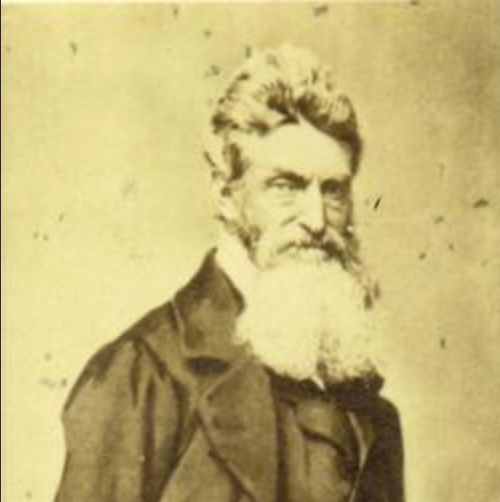John Brown: Madman, Martyr, Or Both?
In 1837 word of the murder of abolitionist newspaper editor Elijah Lovejoy reaches John Brown who is thirty-six years old and living in Franklin Mills, Ohio.
By then Brown has already led a hard life. His mother dies when he is eight and he grows up with an overbearing father, Owen Brown, a strict Calvinist of the old school, who demands daily study of the Bible and a life dedicated to achieving piety and self-perfection.
At age sixteen, he begins religious studies at the local Congregational Church after publicly repenting and accepting Jesus Christ as his savior. He ponders the ministry before apprenticing with his father in the tannery business — a particularly noxious occupation using human waste and chemicals to convert slaughtered animal hides into leather for shoes, belts, jackets and saddles.
In 1820 he marries his first wife, whom he describes as “a neat industrious & economical girl, of excellent character, earnest piety & good practical common sense.” He opens his own tannery with an ambitious plan to raise and slaughter the cattle he will use to make and sell finished leather goods. His dreams, however, fade by 1832, when his wife dies following an “instrumented-aided” delivery of her seventh child over a ten year period. Brown himself then suffers a prolonged illness that curtails his work and leads to stifling debt.
In 1833, Brown marries his second wife, the sixteen year old Mary Day, who will eventually bear 13 more children. Their days together will include a daily morning gathering where Brown requires each member of the family to read Bible verses, followed by delivering his own religious admonitions.
As a dedicated Calvinist, Brown is forever searching after God’s plan for his life. He finds the answer in putting an end to slavery.
In his autobiography, he write that his antipathy to slavery begins when he is 12 years old, and witnesses a young black boy being “beaten with iron shovels.” As early as 1834, Brown tells his brother Frederick that he is “trying to do something in a practical way for my fellow men that are in bondage.” His initial thoughts turn toward bringing a black youth into his family, educating him and “teaching him the fear of God.”
His early anti-slavery activities include organizing a petition to protest Ohio’s “black codes,” hiring freed men to work on his farm, and insisting that they be treated respectfully within his local church, much to the dismay of the congregation.
When word reaches him of the Lovejoy assassination, he gathers his family together and reveals his intent to go to war against slavery. His oldest son, John Jr., age thirteen at the time, recalls this event years later: He asked who of us were willing to make common cause with him in doing all in our power to “break the jaws of the wicked and pluck the spoil out of his teeth. Are you Mary (his second wife), John, Jason and Owen?” As each family member assented, Brown knelt in prayer and administered an oath pledging them to slavery’s defeat.
He declares his own commitment at a prayer meeting at the First Congregational Church of Hudson, Ohio to honor Lovejoy’s memory. Toward the end of the service, Brown stands, raises his right hand, and makes a pledge:
Here, before God, in the presence of these witnesses, from this time, I consecrate my life to the destruction of slavery
John brown
From that time forth, John Brown will pursue his mission with messianic fury and savage violence. In 1856 he commits his first murders, hacking to death some six pro-slavery men in what becomes known as the Potawatomie Massacre in “Bloody Kansas.” Over the next three years he continues to lead raids to free slaves while planning the event that inexorably leads to the Civil War – his foray into Harpers Ferry, Virginia, to provoke a slave uprising across the south. The plot fails, with Brown wounded and captures and two of his sons and many others killed in battle. But the event gains national headlines, including a subsequent trial and Brown’s death on the gallows. While he will remain a madman across the South, he will gradually be seen as a martyr to a just cause in the North.

Those who wish to learn the full story of John Brown could read the following chapters in the book:
- 115
- 210
- 217
- 222
- 232
- 233
- 234
- 238
- 242
- 250
- 274
- 276
- 278
- 279
